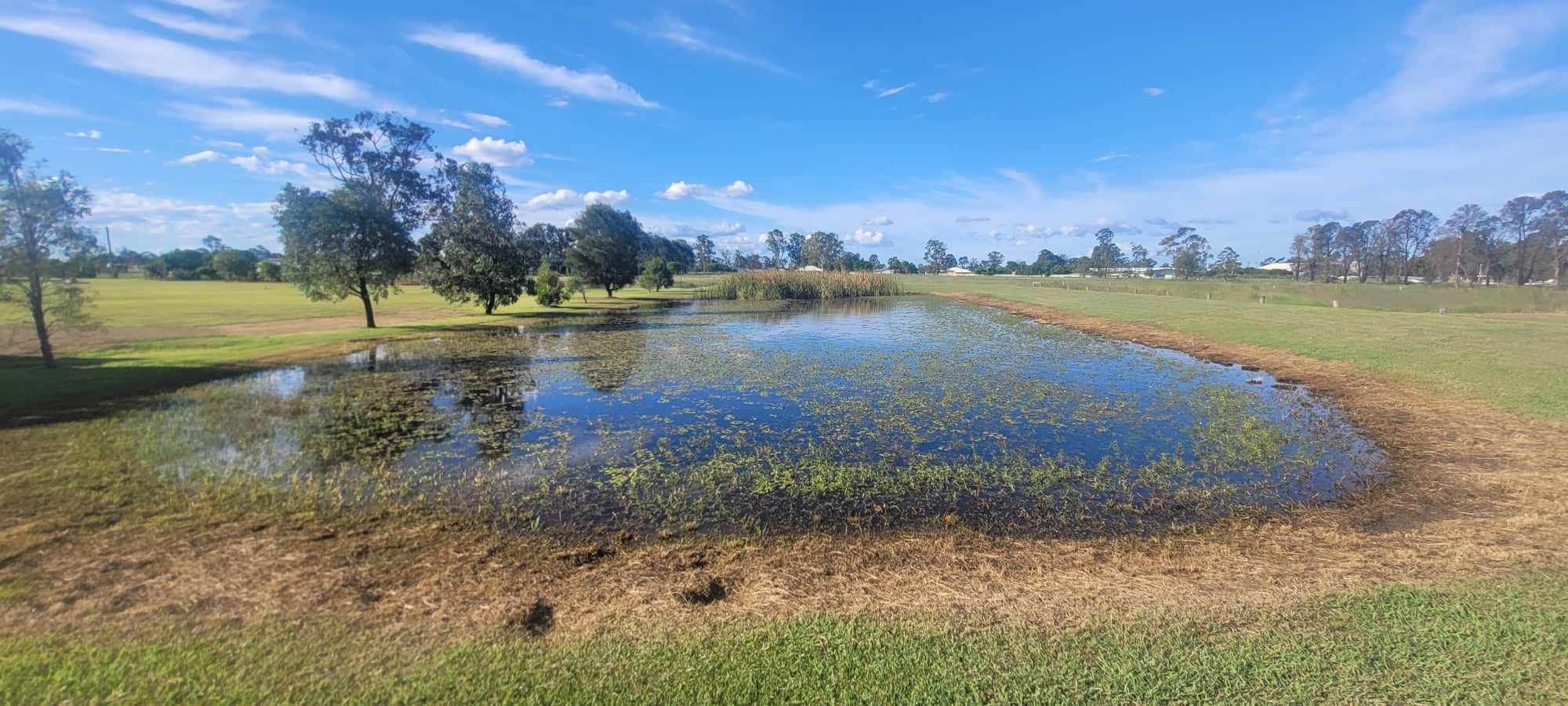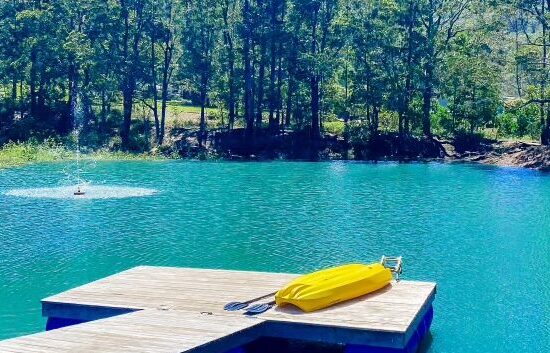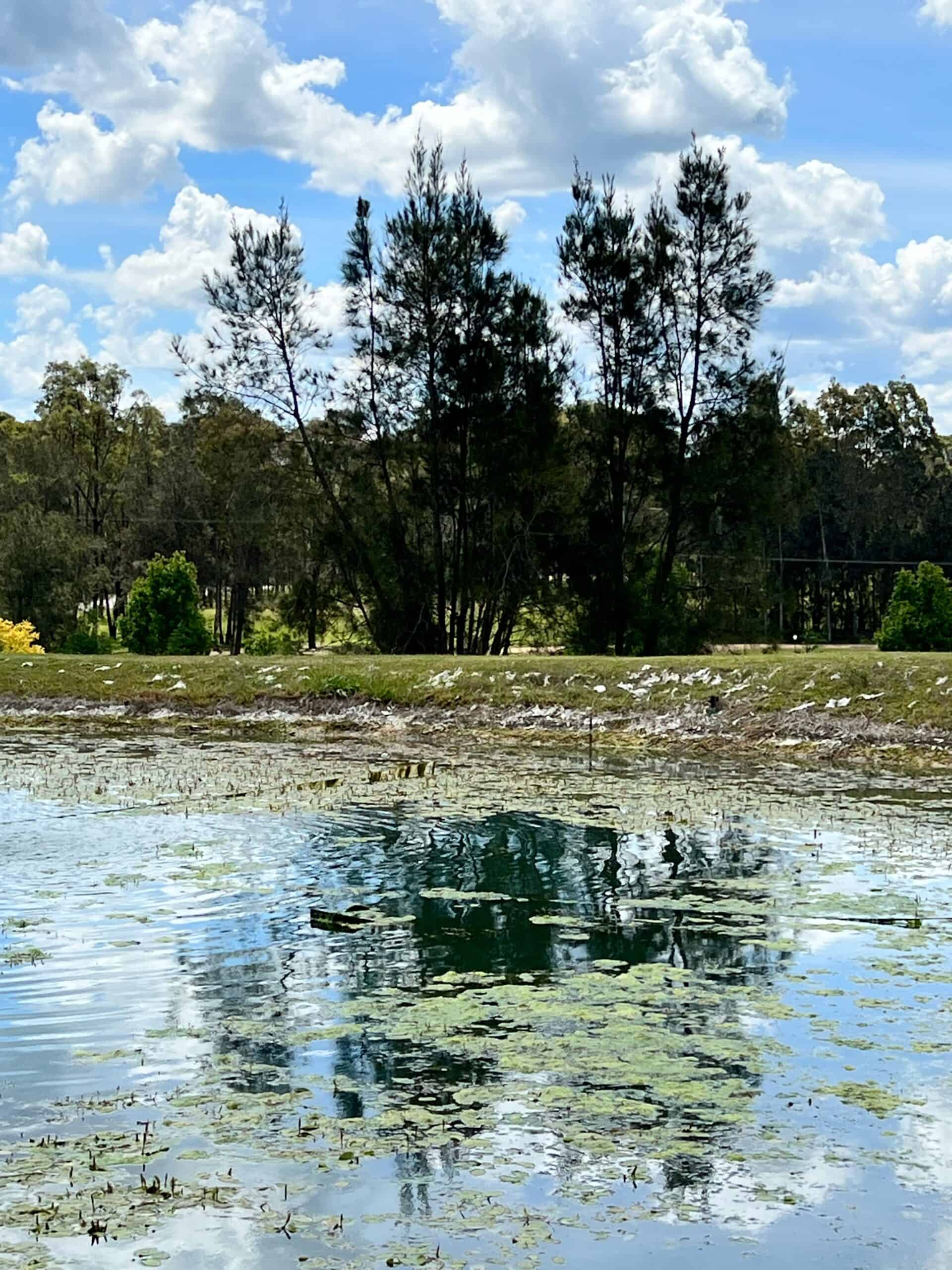
Reclaiming Your Dam: A Step-by Step Guide to Weed Control
Q. Could you please identify these weeds for me and advise what product would eradicate the weeds and clean our Dam. The dam is 50m x 20m and 1m depth in the middle.
A healthy dam is a valuable asset, providing water for irrigation, livestock, and even recreation. But when weeds take over, they can impact water quality and reduce usable space, If you’re struggling with a dam overtaken by reeds, pondweed, and other unwanted aquatic plants. Here’s a guide to help you identify common weeds and take effective action to restore your dam.
Identifying the Weeds
The first step to effective weed management is identifying what you’re dealing with. Based on the advice provided, the common weeds found in dams often include:
Cumbungi (Emergent Reeds): These tall, reed-like plants are common in shallow water. They reproduce through seeds and rhizomes (underground stems), making them persistent and difficult to eliminate completely. Their seeds can survive in the soil for an incredibly long time.
Potamogeton Sulcatus (Floating Pondweed): This weed features floating leaves and can quickly spread across the water’s surface.
Water Primrose (Yellow Flower): This vibrant, flowering weed can also become problematic in dams.
A Multi-Treatment Approach to Weed Eradication
Dealing with these weeds requires an approach using a combination of chemical treatments and ongoing maintenance. Here’s a step-by-step plan:
1. Initial Herbicide Treatment:
Choose the Right Product: The recommended herbicide is AQ200 combined with a wetting agent. This combination is effective against cumbungi, potamogeton, and water primrose.
Mixing and Application: For dense weed populations, use 5L of AQ200 and 2L of wetting agent, which is enough to cover between 1,250m2 to 2,500m2.
Mix 400ml of AQ200 with 150ml of wetting agent into 100L of clean water. Use clean water, not dam water, because sediment in the dam can neutralise the herbicide.
Use a sprayer with a heavy spray setting (not a fine mist) to thoroughly drench the weeds, ensuring complete coverage.
Continue spraying in this manner until all the weeds are treated.
Important Note: AQ200 has a 10-day withholding period, meaning the treated water should not be used for drinking, irrigation, livestock, or pets during this time.
2. Muck Breaking for a Cleaner Dam:
Introducing Muck Breaker: Start applying 4 tablets of Muck Breaker evenly spaced across your dam once per fortnight for about 6 weeks. Then, switch to a monthly application.
How it Works: Muck Breaker helps decompose organic plant matter, reducing excess nutrients that can fuel further weed growth and algae blooms. This process also contributes to clarifying the water.
3. Physical Removal and Ongoing Monitoring:
Raking Out Decaying Weeds: About two weeks after your initial herbicide application, you’ll likely need to rake out any dead or decaying cumbungi and potamogeton.
Dealing with Muddy Water: If your dam water is very muddy, apply a flocculant to help clarify it. Three days after flocculant application, you will likely need to spot spray any surviving weeds.
4. Long-Term Weed Management:
Aquatic Blue: Apply Aquatic Blue every 6 months. This product limits UV penetration in the water, and slows the process of photosynthesis in weeds. This is a great way to reduce new growth.
Things to keep in mind:
Persistence is Essential: Dam weed management is an ongoing process, not a one-time fix. These weeds, particularly cumbungi, can be resilient, with seeds remaining viable for years.
Don’t skimp on herbicide coverage: Given the density of the weeds, you will need to ensure that you have applied the correct amount of herbicide with the correct amount of wetter.
Clean Water is Crucial: Always dilute herbicides with clean water to ensure effectiveness.
Regular Monitoring: Monitor your dam regularly for new weed growth and address it promptly to prevent large-scale infestations.
By following these steps, you can effectively reclaim your dam and enjoy a cleaner, healthier water source. Remember, a proactive approach to weed management will save you time and effort in the long run.
I
.




